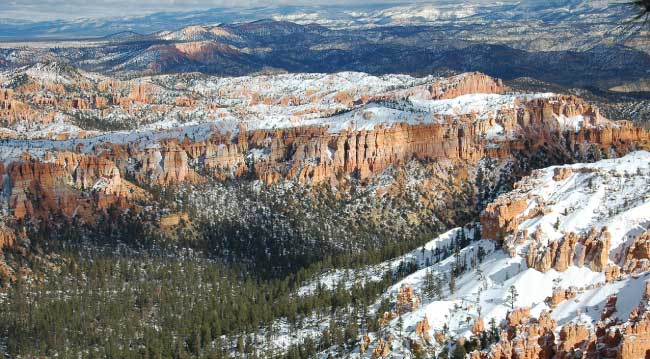Bryce Canyon hiking report. Winter hiking in Bryce Canyon can be strenuous, but the otherworldly views – and the silence – make it all worthwhile, says writer Jeffrey Rindskopf …
[mc4wp_form]
Hiking the Hoodoos in Bryce Canyon National Park
Some outdoor destinations make you work for a view, but Bryce Canyon National Park isn’t one of them. The park’s most famous vistas are easily accessible within a few short steps of a parking lot.
During my visit in the dead of winter, I could see most of the tourists shuffling to the outlooks, snapping a few smartphone photos and returning to their car heaters to spare themselves from the bitter wind. I determined not to be among them.
On my first day, I conquered the park by car, driving the length of Highway 3 before returning to my cozy motel room. The second was my day to hike the hoodoos and brave the park’s subzero temperatures for a more substantial length of time. After some consulting with the park map, I decided to hike to Tower Bridge via the Fairyland Loop trail, an out-and-back hike totaling six miles of walking.
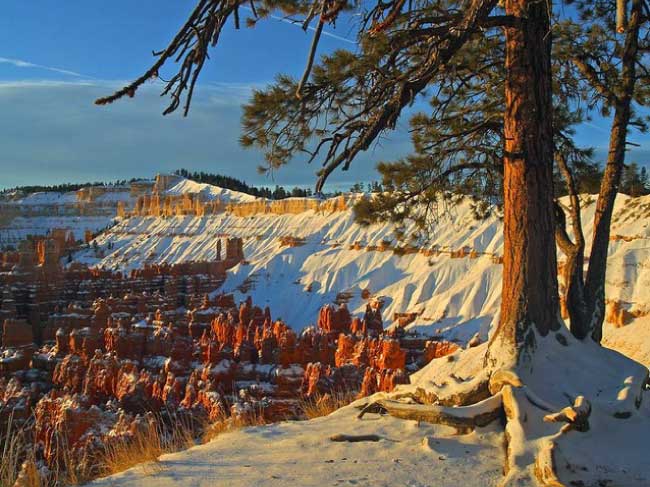
Bryce Canyon Hikes
While I’d never hesitate to recommend visiting Bryce Canyon during the winter, it’s important to come prepared. Bryce Canyon is bordered by desert to the Southwest, but still suffers harsh Rocky Mountain-style winters due to its high elevation. Pack plenty of layers, socks, and a pair of insulated winter boots to keep your toes from freezing during the hike. On sunny days you’ll also need sunglasses to protect your eyes from the sun reflecting off the snow, and even a layer of sunscreen on your face and neck. Last but not least, bring a camera—Bryce Canyon abounds with once-in-a-lifetime photo opportunities.
I began my descent along the Fairyland Loop trail, which splits off from the Rim Trail passing through the perpetually crowded Sunrise Point. Like the Grand Canyon, almost every trail in Bryce Canyon begins with negative elevation gain as hikers venture downward from the overview and into the canyon for more intimate views of the canyon’s otherworldly rock formations.
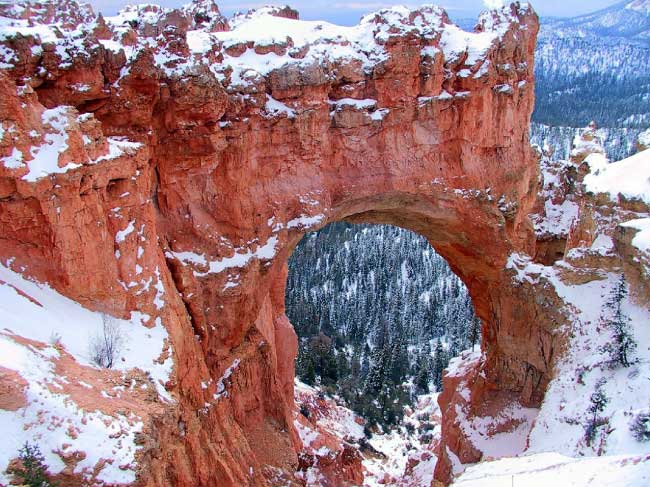
In all my layers, I soon began to sweat despite the easy downwards stroll. I paused to shed my thick outer layer, and that’s when I heard it—nothing. I held my breath, and I couldn’t detect a noise in the world. The cold had driven the wildlife into hiding and the wind was silenced by the evergreens and the towering rocks on either side of me.
Bryce Canyon Wildlife
In fact, the only animals I saw in the duration of my Bryce Canyon visit were ravens. Their shiny black feathers never looked so spectacular or majestic as when silhouetted against white snow and orange towers of rock.
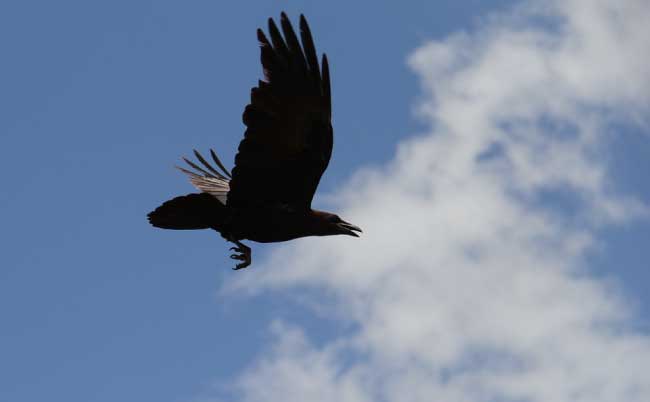
Earlier, I alluded to the appeals of Bryce Canyon in the winter but never clarified. The hoodoos, badlands and myriad other rock formations here are unique no matter what the weather, but they look especially surreal when covered with a dusting of pure white snow. With every new corner I turned along the lengthy trail, I witnessed a new view ripe for science fiction—surely these snow-dusted red sand dunes and monolithic sculptures of rock must belong on another planet, and not on Earth?
The Tower Bridge Trail ends, of course, at Tower Bridge—a unique formation among unique formations notable for the narrow strip of red rock that connects two separate structures. It doesn’t take much imagination to see how the formation earned its name.
I found a stump spread across a frozen lake in the shadow of the bridge and resolved to enjoy a lengthy swig from my water canteen and a pre-packed lunch. Hikers, as always, should bring some sort of sustenance for such a lengthy walk in the woods and plenty of water—don’t count on clean snow to keep you hydrated when it would be far safer and more sanitary to just load a pack with extra canteens.
While I was in need of a decent meal, I made the mistake of staying stationary far too long in such cold weather. The cold leeched through my gloves and my boots, and they never truly recovered despite the strenuous hike back. I had packed a few oxygen-activated hand warmers—as you should too—but used all but two of them up before this hike in my carelessness. I shoved the two into either glove, so my feet were forced to suffer until I made it back to my car, three-plus miles away.
I wish I could say the hike back from Tower Bridge was as enjoyable as the one there, but I was struggling through my own exhaustion in a race against time. The early winter sunset was coming, and I wasn’t eager to be hiking in darkness and even lower temperatures—plus I wanted to make it back to Sunset Point for a few more pictures. If you’re planning to visit Bryce Canyon, know your limits so the latter, uphill half of your hike won’t push your limits.
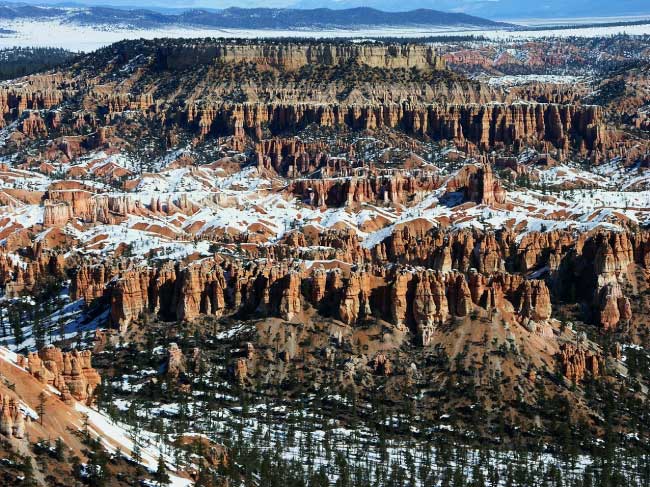
My hike only slightly pushed my own limits, thankfully allowing me a return to the parking lot before nightfall. Once I made it back inside my car, I cranked my heater up to full blast with one hand as I used the other to shed my boots and shove my feet against the lower vents near the pedals. My toes had gone numb but for an unpleasant tingling pain.
Again I thought of those tourists who would never make it past sunrise point, who wouldn’t have the chance to experience such unprecedented peace. I thought of Tower Bridge, and I thought of that all-encompassing silence, and I thought of those Martian landscapes. It was worth it. It might have been worth it even if I’d lost a toe.
By Jeffrey Rindskopf

